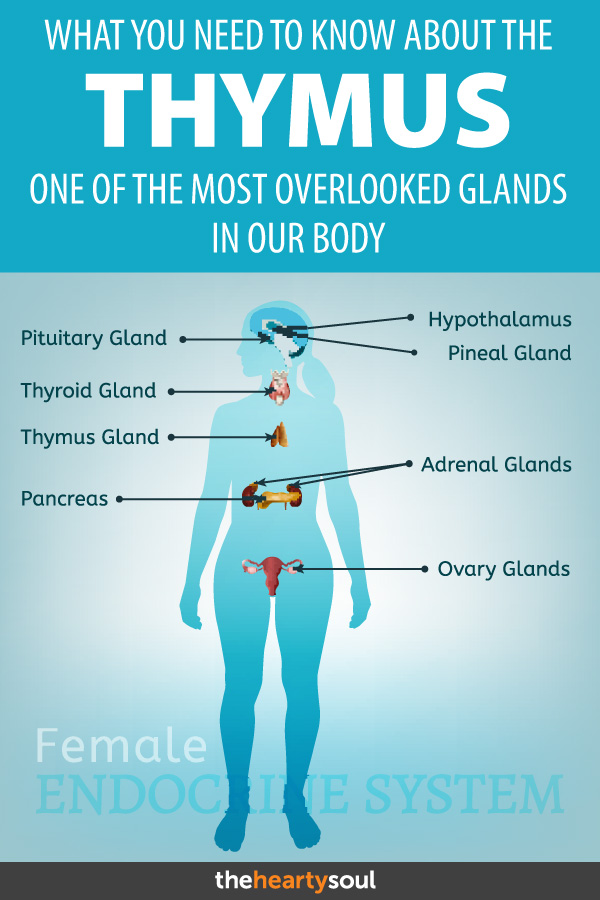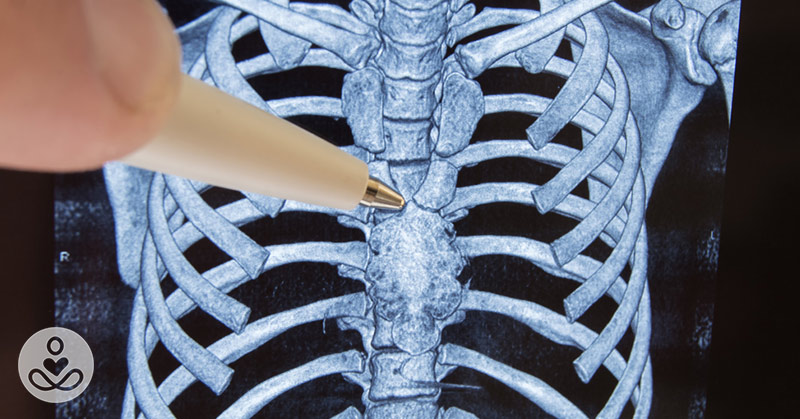While many people may not be familiar with the thymus gland it plays a critical role for the immune system. It’s important to note that thymus size and function are determined by factors such as genetics, and pre and post-natal nutrition. (1)
Function of the thymus

The thymus is an irregularly shaped gland, which is part of the lymphatic and endocrine system. It is made of lymphocytes, epithelial cells, and fat tissue. The thymus is responsible for the production and maturation of T cells. The most important and active stage of the thymus is birth throughout childhood, where it is actively helping to build the body’s immunity. As T cells mature they migrate to lymph nodes throughout the body to strengthen the immune system to help fight disease. It is the hormone thymosin produced by the thymus, which stimulates the development of T cells. T cells are a specific type of white blood cell that protects the body from numerous threats including viruses and infections. (2)
What does the thymus look like?

The name thymus is derived from the Greek thymos, which means warty excrescence, in relation to its resemblance to the flowers of the thyme plant. (3) The thymus is an irregularly shaped gland located in your chest, behind the breast bone, and between your lungs. (4) It is divided into a left and right lobe, each lobe is further divided into lobules, which give the thymus a bumpy appearance. It reaches its largest weight of one ounce during puberty and slowly shrinks as we age. In adults, the thymus gland is comprised primarily of fat and fibrous tissues. (2, 5)
Common thymus disorders

The three most common thymus disorders are (5):
Myasthenia gravis (MG) –

This is the most common autoimmune illness linked to thymomas. A thymoma is a tumor or growth in the thymus gland. Approximately 30%-65% of individuals with thymomas also have MG. With this illness, the immune system creates antibodies that block chemical signals for the muscles to move. Individuals with MG tire easily and can experience severe muscle weakness. (5)
Pure red cell aplasia (PRCA)-

This disorder causes a severe reduction in the body’s ability to make new red blood cells. Reduced red blood cells can lead to anemia, which includes symptoms such as dizziness, shortness of breath, general weakness and feeling tired.
Hypogammaglobulinemia–

This disorder causes the body to make low amounts of antibodies to fight infection. As a result, an individual with this condition is more susceptible to infections.
Thymus cancer

Nearly all of the cells in the body can become cancerous and spread to other parts of the body. Thymus cancer is rare. In most cancers, thymus tumors begin in the epithelial cells. (6, 7) Epithelial cells are what give the thymus its shape and structure. Thymomas and thymic carcinomas develop from these cells. Lymphocytes make up the bulk of the thymus gland. These immune cells found in the thymus and in other parts of the body can develop into Hodgkin’s disease and non-Hodgkin’s lymphoma.

Sources
- Gui, J., Mustachio, L. M., Su, D., & Craig, R. W. (2012, June). Thymus Size and Age-related Thymic Involution: Early Programming, Sexual Dimorphism, Progenitors and Stroma. Retrieved July 18, 2018, from https://www.ncbi.nlm.nih.gov/pmc/articles/PMC3375084/
- Sargis, R. M., M.D., PH.D. (2014, June 10). An Overview of the Thymus. Retrieved July 18, 2018, from https://www.endocrineweb.com/endocrinology/overview-thymus
- Jacobs, T., Frush, D. P., & Donnelly, L. F. (1999, January 1). The Right Place at the Wrong Time: Historical Perspective of the Relation of the Thymus Gland and Pediatric Radiology. Retrieved July 18, 2018, from https://pubs.rsna.org/doi/abs/10.1148/radiology.210.1.r99ja4511?journalCode=radiology&
- The thymus – Canadian Cancer Society. (n.d.). Retrieved July 18, 2018, from https://www.cancer.ca/en/cancer-information/cancer-type/thymus/thymus-cancer/the-thymus/?region=on
- Steinmann, G. G., Klaus, B., & Müller-Hermelink, H. K. (1985, November). The involution of the ageing human thymic epithelium is independent of puberty. A morphometric study. Retrieved July 18, 2018, from https://www.ncbi.nlm.nih.gov/pubmed/4081647
- What Is Thymus Cancer? (n.d.). Retrieved July 18, 2018, from https://www.cancer.org/cancer/thymus-cancer/about/what-is-thymus-cancer.html
- Cancerous tumours of the thymus – Canadian Cancer Society. (n.d.). Retrieved July 18, 2018, from https://www.cancer.ca/en/cancer-information/cancer-type/thymus/thymus-cancer/cancerous-tumours/?region=on
- Genova, R., & Guerra, A. (n.d.). Thymomodulin in management of food allergy in children. Retrieved July 18, 2018, from https://www.ncbi.nlm.nih.gov/pubmed/3781763
- Review National Hepatitis C Program Office Hepatitis C Technical Advisory Group. (2005, January 24). Viral Hepatitis. Retrieved July 18, 2018, from https://www.hepatitis.va.gov/provider/reviews/alternative-medicine.asp#S5X
- Thymus Extract: Uses, Side Effects, Interactions, Dosage, and Warning. (n.d.). Retrieved July 18, 2018, from https://www.webmd.com/vitamins/ai/ingredientmono-1009/thymus-extract
- Thymus Extracts. (n.d.). Retrieved July 18, 2018, from https://wa.kaiserpermanente.org/kbase/topic.jhtml?docId=hn-2916001

